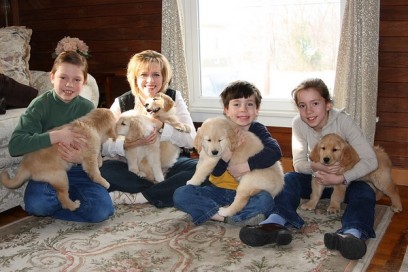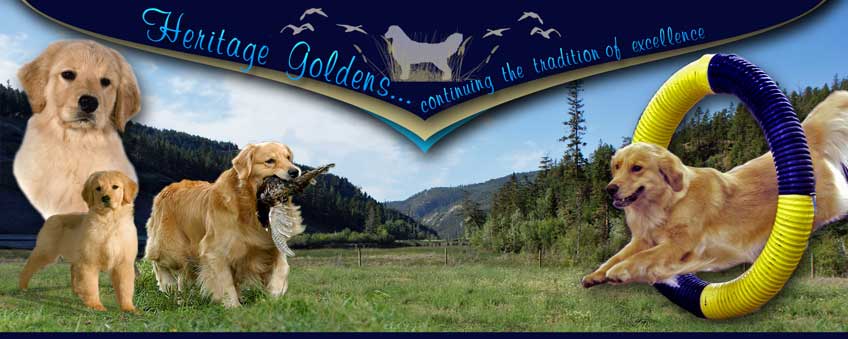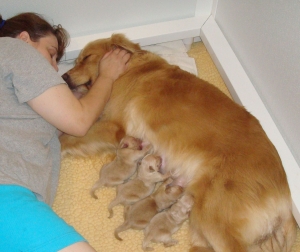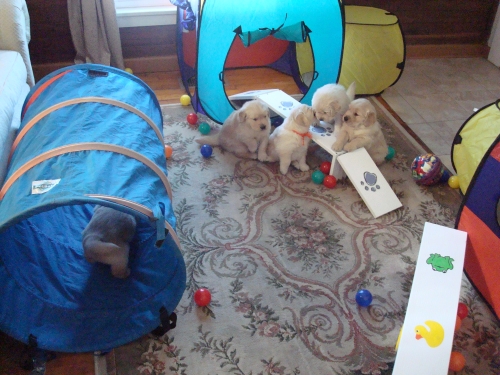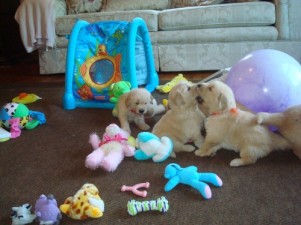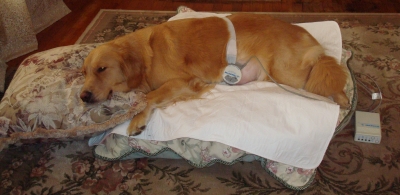
Much of what we do to raise our puppies is based on years of research, observing mother nature, feedback from puppy owners, and our experience in behavior and training. We are combining four generations of breed experience, mentorship from some of the top breeders in the country, and our own work in breeding and training service dogs to produce stable and well-balanced puppies.
We have a holistic approach to raising our puppies and a focus on enriching their lives from the day they are born. All of our litters are born and raised in a home environment because we believe this provides many of the foundation experiences they need to grow into happy well adjusted adults. The puppies are always around people making it easier for us to keep a close eye on their development.
Our puppy raising program is designed to give each and every puppy the best start in life. Through nutrition, stimulation, handling, grooming, and socialization, we prepare each puppy for joining their new family and to make this transition as seamless as possible.
Our puppy raising program is designed to give each and every puppy the best start in life. Through nutrition, stimulation, handling, grooming, and socialization, we prepare each puppy for joining their new family and to make this transition as seamless as possible.
We don't breed without doing a lot of planning, health testing, detailed evaluation of pedigrees, and good pre-natal care. A healthy happy puppy starts well before a female is bred. We have found proper nutrition plays an important role in preparing for a litter. We provide our expecting mothers the highest quality nutrition with a combination of raw and ultra premium dog food with DHA and Omega 3 fatty acid supplements to aid in puppy brain development.
In an attempt to find the best sires to compliment our females we may do vet performed artificial inseminations. We feel this reduces the risks associated with shipping a female for breeding and reduces the stress a mother experiences. We have had great success with this method of breeding and it has opened the door to add pedigrees to our program that would otherwise be inaccessible.
In an attempt to find the best sires to compliment our females we may do vet performed artificial inseminations. We feel this reduces the risks associated with shipping a female for breeding and reduces the stress a mother experiences. We have had great success with this method of breeding and it has opened the door to add pedigrees to our program that would otherwise be inaccessible.
We use Veterinary Perinatal Specialties Inc. and their Whelpwise services
to assist in the time leading up to and during delivery. This is a service that allows us to monitor uterine contractions (labor) and fetal heart rates. This allows us to identify the onset of labor before outward signs are apparent. Uterine contractions and puppies are followed throughout the whelping process confirming that all is going well, or identifying problems in a timely manner. This allows us to make timely informed decisions and make the interventions more likely to result in healthy pups.
We have a custom made Jonart whelping box thatís easy to clean and maintain and provides the new puppies a safe, clean, and warm environment to start their lives.
to assist in the time leading up to and during delivery. This is a service that allows us to monitor uterine contractions (labor) and fetal heart rates. This allows us to identify the onset of labor before outward signs are apparent. Uterine contractions and puppies are followed throughout the whelping process confirming that all is going well, or identifying problems in a timely manner. This allows us to make timely informed decisions and make the interventions more likely to result in healthy pups.
We have a custom made Jonart whelping box thatís easy to clean and maintain and provides the new puppies a safe, clean, and warm environment to start their lives.
The care of the mother and every puppy in the litter is of critical importance to us. Once labor begins, our girls are never left alone and we often sleep right next to the box to oversee everything.
Once the puppies are born they are cleaned by their mother and allowed to nurse. When the timing is right we will weigh each puppy and give them each a unique ribbon color so that we are able to tell each one apart and keep documentation records for each puppy.
The first three days of the puppies' life is a special time for the mom and puppies to recuperate and bond. We keep the whelping room warm, comfortable, and relatively quiet. At three days the vet comes to our house to give the puppies and mom their post-whelp checkup.
Once the puppies are born they are cleaned by their mother and allowed to nurse. When the timing is right we will weigh each puppy and give them each a unique ribbon color so that we are able to tell each one apart and keep documentation records for each puppy.
The first three days of the puppies' life is a special time for the mom and puppies to recuperate and bond. We keep the whelping room warm, comfortable, and relatively quiet. At three days the vet comes to our house to give the puppies and mom their post-whelp checkup.
We provide gentle daily handling and individual attention throughout the first few weeks of our puppies' lives. During this phase, we handle the puppies regularly and imprint them on human scent. Handling the puppies teaches them to relax and trust human interaction, even before their eyes and ears are open. At this time tactile and sense of smell stimulation are important and we make sure the puppies are exposed to multiple novel scents.
The handling of each puppy once per day involves the following exercises:
2.Head held erect -- Using both hands, the pup is held perpendicular to the ground, (straight up), so that its head is directly above its tail. This is an upwards position.
3.Head pointed down -- Holding the pup firmly with both hands the head is reversed and is pointed downward so that it is pointing towards the ground.
Five benefits have been observed in canines that were exposed to the
Bio Sensor stimulation exercises:
∑Improved cardio vascular performance (heart rate)
∑Stronger heart beats
∑Stronger adrenal glands
∑More tolerance to stress
∑Greater resistance to disease
Stimulated puppies have also been found to be more active and more exploratory than their non-stimulated littermates. Stimulated puppies were more dominant in competitive situations, less disturbed or upset by test conditions and calmer then non-stimulated littermates. At Heritage we have found early neurological stimulation combined with our other handling and socialization techniques help our puppies house train easier, learn faster, and have an overall sense of well being.
By three weeks the puppies' eyes and ears open. The puppies are moved to an active area of the home where they can experience many sights, smells, and sounds. We hang bright toys above their heads to help them learn to focus. In the play pen we provide various things for the puppies to climb on, under, and through to develop physically and mentally. As they develop we begin providing regular environmental enrichment activities including adding things that move, and obstacles such as tunnels, ramps, puppy teeter-totter, and wobble boards. We systematically expose all of our puppies to new objects, flooring types, and problem solving opportunities. This type of environmental enrichment enhances intelligence, confidence, learning, and resiliency.
During the day, a sound effects CD is played for stimulation as well as getting the puppies accustomed and comfortable with sounds such as babies crying, dogs barking, thunder, clapping, kids screaming, gun shots, dog show sounds etc.
During the day, a sound effects CD is played for stimulation as well as getting the puppies accustomed and comfortable with sounds such as babies crying, dogs barking, thunder, clapping, kids screaming, gun shots, dog show sounds etc.
When socializing our puppies we use the RULES OF SEVENS technique.
Meaning that by the time a puppy is 7 weeks old they should have:
1.Been on 7 different ground textures/surfaces
2.Played with 7 different types of objects
3.Been in 7 different locations
4.Been exposed to 7 challenges
5.Eaten from 7 different containers
6.Eaten in 7 different locations
7.Met and played with 7 new people
When we begin to introduce solid food we also introduce clicker training so the puppies associate the click with the food reward. This is a valuable skill for later training and helps the puppies learn to problem solve and enjoy the learning process. To build on this foundation, we begin teaching some basic puppy skills including sit, down, and coming when called, using treats as a motivator.
Meaning that by the time a puppy is 7 weeks old they should have:
1.Been on 7 different ground textures/surfaces
2.Played with 7 different types of objects
3.Been in 7 different locations
4.Been exposed to 7 challenges
5.Eaten from 7 different containers
6.Eaten in 7 different locations
7.Met and played with 7 new people
When we begin to introduce solid food we also introduce clicker training so the puppies associate the click with the food reward. This is a valuable skill for later training and helps the puppies learn to problem solve and enjoy the learning process. To build on this foundation, we begin teaching some basic puppy skills including sit, down, and coming when called, using treats as a motivator.
This is the time we also begin foundation for housetraining. At this age puppies begin to make the association between where they sleep and where they potty. The play area is then divided in two, a sleeping and playing area and a potty area with a litter box. This helps puppies learn to leave the sleeping area to eliminate.
We also begin introducing puppies to car rides and the grooming process including regular nail trims and baths
By week six the puppies are introduced to napping in crates together and separately. If a puppy is flying home with his new owners they will also be introduced to an airline sherpa bag.
By week six the puppies are introduced to napping in crates together and separately. If a puppy is flying home with his new owners they will also be introduced to an airline sherpa bag.
As we begin to prepare for the puppies to go to their new homes we ask families to send a t-shirt that smells like all the family members. We place the t-shirt in a crate with the puppy when he naps so he can begin being comforted by his new families' scent. When puppies go home they are sent with the t-shirt which will have their littermates scent on it.
The puppies have been wormed routinely since birth and at 7-8 weeks return to the vet for fecal tests, check-ups, and first puppy vaccinations.
Click on the links below to view the vaccination protocol we use and why.
We pride ourselves on making good matches with our puppies and their new homes. Because no two puppies are alike, we use these evaluations to help determine puppy placements. For temperament testing we use Volhardís Puppy Aptitude Testing.
For Structure evaluations (conformation) we tend to use Pat Hastings Puppy Puzzle evaluation style to methodically review the structure of each puppy and make determination about which puppies are best suited for conformation, breeding, performance, and companionship.
Bringing baby home:
There is some controversy about when pups should leave their litter. While it means a lot more work to keep a litter an extra week, we prefer our puppies to remain with their mother and littermates for at least 8 weeks because we see a difference in the development of coping abilities in that last week. We feel they are more capable and confident and are better at adjusting to their new home. We believe that in that last week with their siblings a puppy learns a lot about being a dog and how to act socially acceptable with other dogs before becoming a part of a human family. Since our puppies get their first vaccination at about 7 weeks this also gives them a week to build immunity before they go out into the big world.
The first week home for a puppy can be stressful for both puppy and family. We suggest that this should be a time of relative calm and quiet for the puppy and that time should be spent adjusting and bonding with the family. This is the time to establish routines for your puppy and begin housetraining. We understand how exciting it is to have a puppy to show off but we recommend you limit the number of outings and are careful not to overwhelm your puppy during this sensitive time.
Click on the links below to view the vaccination protocol we use and why.
We pride ourselves on making good matches with our puppies and their new homes. Because no two puppies are alike, we use these evaluations to help determine puppy placements. For temperament testing we use Volhardís Puppy Aptitude Testing.
For Structure evaluations (conformation) we tend to use Pat Hastings Puppy Puzzle evaluation style to methodically review the structure of each puppy and make determination about which puppies are best suited for conformation, breeding, performance, and companionship.
Bringing baby home:
There is some controversy about when pups should leave their litter. While it means a lot more work to keep a litter an extra week, we prefer our puppies to remain with their mother and littermates for at least 8 weeks because we see a difference in the development of coping abilities in that last week. We feel they are more capable and confident and are better at adjusting to their new home. We believe that in that last week with their siblings a puppy learns a lot about being a dog and how to act socially acceptable with other dogs before becoming a part of a human family. Since our puppies get their first vaccination at about 7 weeks this also gives them a week to build immunity before they go out into the big world.
The first week home for a puppy can be stressful for both puppy and family. We suggest that this should be a time of relative calm and quiet for the puppy and that time should be spent adjusting and bonding with the family. This is the time to establish routines for your puppy and begin housetraining. We understand how exciting it is to have a puppy to show off but we recommend you limit the number of outings and are careful not to overwhelm your puppy during this sensitive time.
The primary reason for us to breed a litter is to acquire a puppy for ourselves and to make a positive contribution to the breed. Keeping this is mind we only choose dogs that are wonderful examples of the breed with excellent temperaments, intelligence, and that come from strong pedigrees with healthy backgrounds.

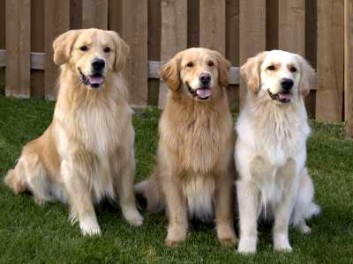
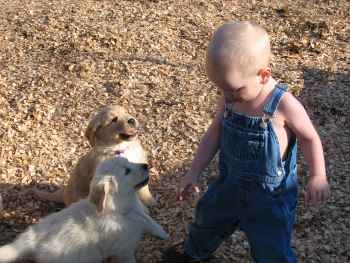
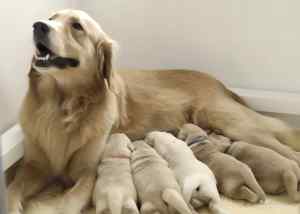
At around 26 days after breeding we can usually palpate (feel) the puppies start to develop. A few weeks later we will do an ultrasound to confirm pregnancy and get an estimate of litter size. This also gives all our future puppy owners their first puppy pictures!
We provide each of our expecting mothers with a stress-free environment, regular exercise, mental stimulation, and plenty of family interaction throughout the pregnancy. Studies support the role of pregnant females receiving nurturing attention and how this effects puppies' early development of Oxytocin receptors in their brains. This has been shown to help puppies remain calmer throughout their life and form very strong bonds to their puppies when they become mothers. Because of this it is not unusual to see us lying with our girls, talking calmly, and rubbing their bellies.
We provide each of our expecting mothers with a stress-free environment, regular exercise, mental stimulation, and plenty of family interaction throughout the pregnancy. Studies support the role of pregnant females receiving nurturing attention and how this effects puppies' early development of Oxytocin receptors in their brains. This has been shown to help puppies remain calmer throughout their life and form very strong bonds to their puppies when they become mothers. Because of this it is not unusual to see us lying with our girls, talking calmly, and rubbing their bellies.
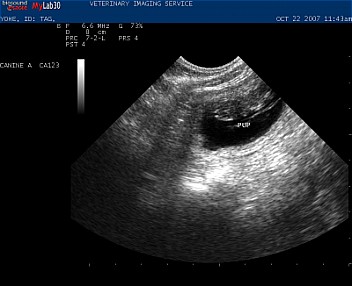
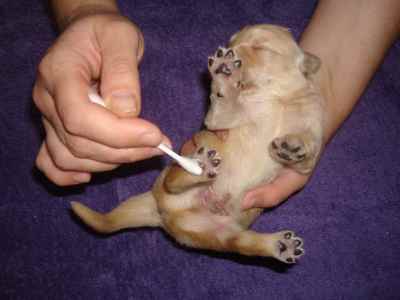
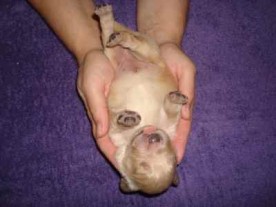
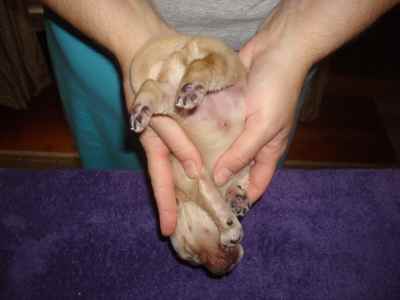
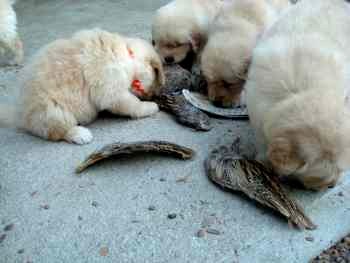
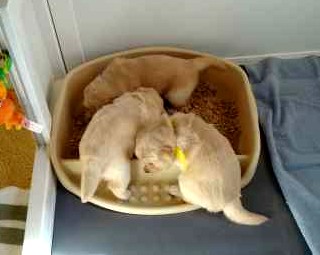

At Heritage, we have adopted the Bio Sensor method to start our new pups off. The U.S. Military, in an effort to improve the performance of working dogs , developed a program called "Bio Sensor" which later became known as the "Super Dog" Program. These exercises impact the neurological system by kicking it into action earlier than would be normally expected. The result being an increased capacity that later can help to make the difference in its performance.
This program entails a series of five exercises done with each puppy, during days three through sixteenth of the puppy's life. These very simple exercises provide early neurological stimulation (none of which naturally occur during this time of the puppy's life) which are supposed to give the dog a superior advantage over those who do not receive such stimulation.
This program entails a series of five exercises done with each puppy, during days three through sixteenth of the puppy's life. These very simple exercises provide early neurological stimulation (none of which naturally occur during this time of the puppy's life) which are supposed to give the dog a superior advantage over those who do not receive such stimulation.

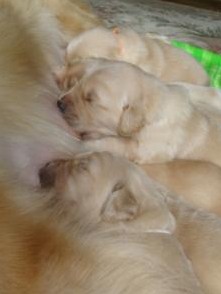
1.Tactile stimulation -- Holding the pup in one hand, the handler gently stimulates (tickles) the pup between the toes on any one foot using a Q-tip.
4.Supine position -- Hold the pup so that its back is resting in the palm of both hands with its muzzle facing the ceiling.
5.Thermal stimulation -- Use a damp towel that has been cooled in a refrigerator for at least five minutes. Place the pup on the towel, feet down.
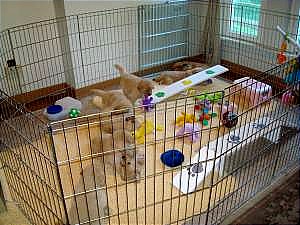
As you can tell, we take socialization very seriously. Early socialization creates a solid foundation for future training and behavior. Exposure to various stimuli allow puppies to develop into
the best possible family companions. Exposure to different areas, different surfaces, different activities and a tremendous variety of people are critical to proper development.
Our puppies are well-socialized with a variety of children and adults throughout their development. They are also exposed to other dogs and cats. The puppies are given opportunities to play individually; they are introduced to retrieving toys, wings, and birds, decoys, and introduced to water. Around six weeks of age, we will also begin some fun tracking skills with scent circles.
the best possible family companions. Exposure to different areas, different surfaces, different activities and a tremendous variety of people are critical to proper development.
Our puppies are well-socialized with a variety of children and adults throughout their development. They are also exposed to other dogs and cats. The puppies are given opportunities to play individually; they are introduced to retrieving toys, wings, and birds, decoys, and introduced to water. Around six weeks of age, we will also begin some fun tracking skills with scent circles.
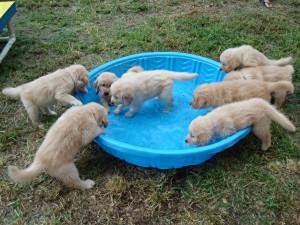
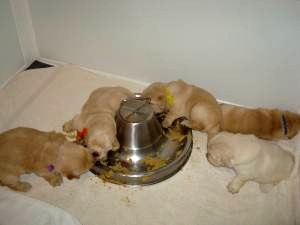
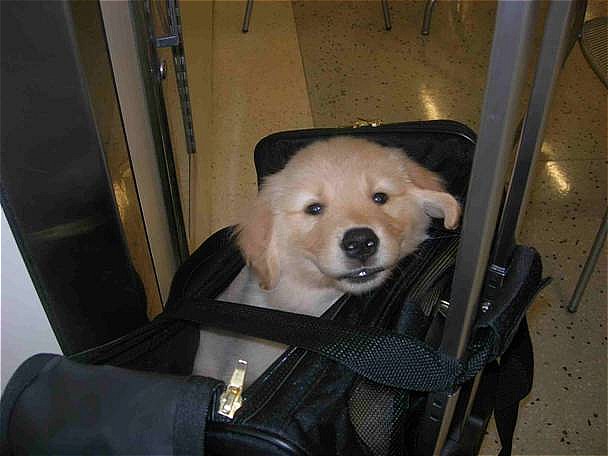
Between 7-8 weeks each puppy is independently evaluated for temperament, structure, and working ability. In an effort to get impartial opinions and to avoid kennel blindness we often use outside resources like fellow breeders, judges, and trainers during these evaluations.
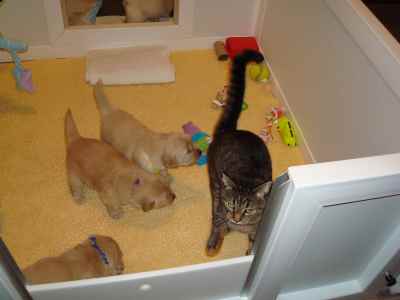
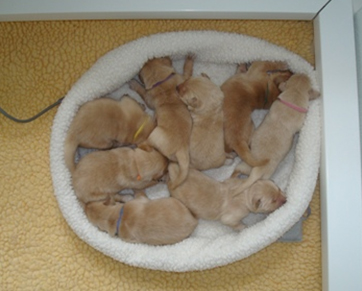



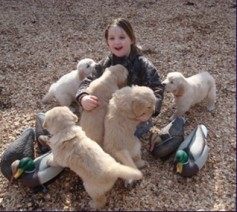
After your puppy comes home we continue to offer life long owner support. We are happy to help puppy buyers with early issues such as crate training, socialization, and potty training. We then remain continually available to assist with any questions or guidance our families may need. We are committed to the welfare of our dogs for their lifetimes.
As you can tell, we put a lot of passion and love into our puppies and in return we have certain expectations for our new owners. For example, we do expect you to enroll in a puppy kindergarten course and follow this with formal classroom obedience sessions to set the foundation for a training relationship that will last a lifetime. A well mannered and socialized dog is a joy to live with; conversely a spoiled, untrained dog can be a nightmare. Your puppy's future is in your hands and that is a big responsibility not to be taken lightly!


